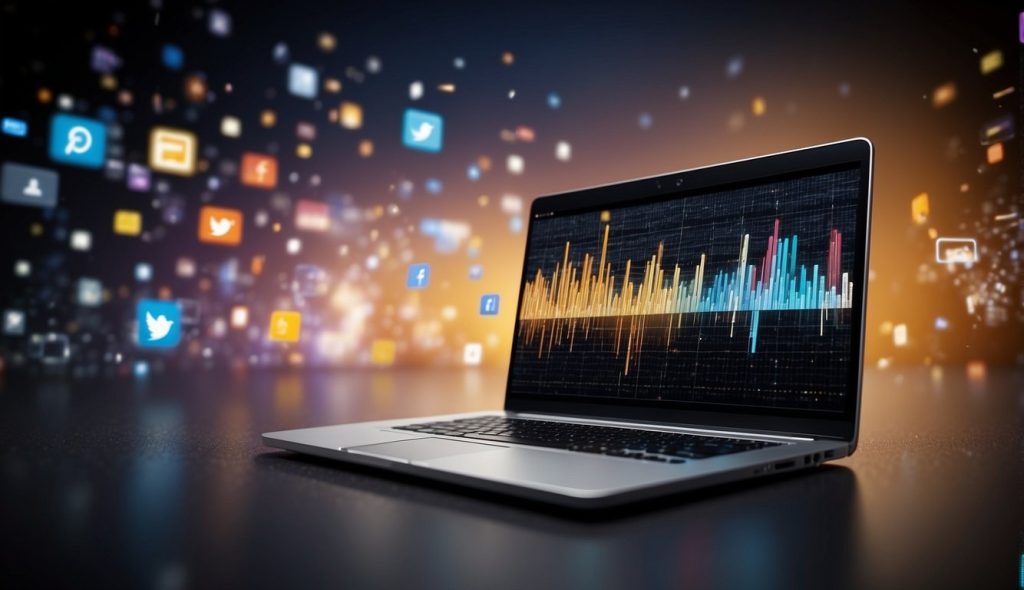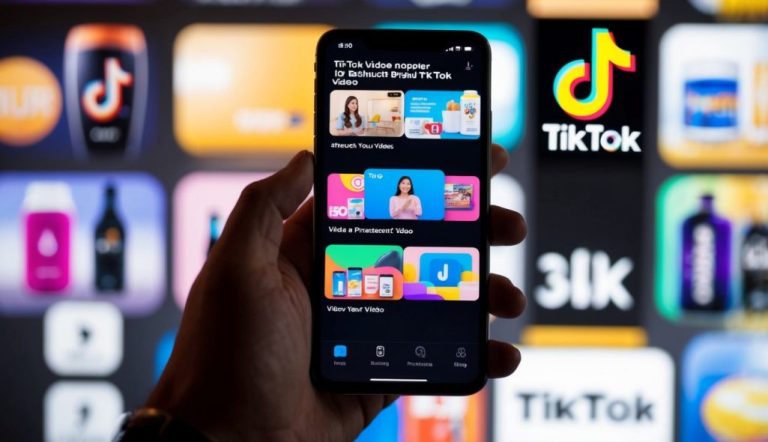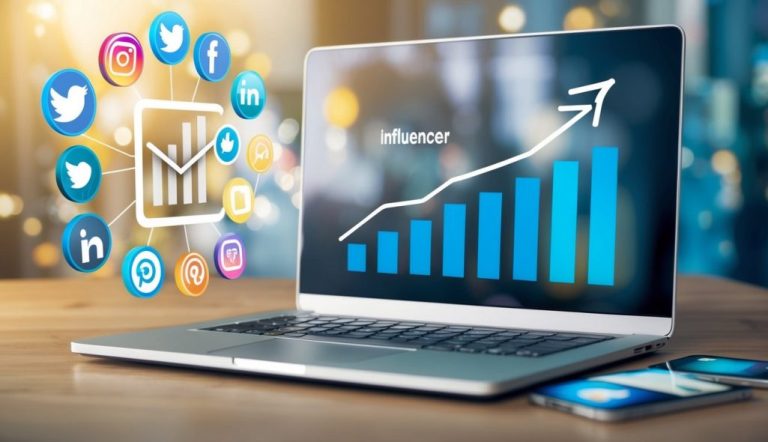Influencer marketing has continually adapted to the changing digital landscape, becoming integral to brand strategies worldwide. As we push further into the decade, you must keep an eye on the emerging trends that shape how brands collaborate with influencers to reach their audience. From integrating advanced technologies like AI to the evolving dynamics between influencers and their followers, the field is set for significant transformations that may redefine what successful influencer campaigns look like.

Understanding these influencer marketing trends can give you a competitive edge and help ensure your marketing efforts resonate with today’s consumers. Changes in social media platforms and content consumption habits influence how influencers and brands interact. Meanwhile, the influence of commerce and technology in marketing presents opportunities and challenges that necessitate a strategic approach. Staying abreast of these trends is crucial for leveraging influencer partnerships effectively and ethically.
Key Takeaways
- Influencer marketing is becoming more integrated with advanced technology to reach audiences effectively.
- Keeping up with changes in social media and content consumption is essential for influencer marketing success.
- Strategic partnerships and ethical practices are essential to future influencer marketing campaigns.
The Rise of AI in Influencer Marketing
Artificial Intelligence (AI) has transformed current influencer marketing trends, allowing you to navigate complex campaigns efficiently. As you leverage these advancements, you’ll notice a distinct shift towards data-driven strategies and tailored content that resonates with audiences.
Virtual Influencers
Your engagement with influencer marketing is now extending into Virtual Influencers: digital personas powered by AI. By the end of 2024, these AI-generated figures will become prevalent in social media, capturing genuine public interest with their uniqueness. These virtual entities are crafted through machine learning algorithms to interact with consumers, often indistinguishable from human influencers.
AI-Assisted Content Creation
In your approach to content, AI offers powerful tools that streamline the creative process. Now, AI-assisted content creation taps into predictive analytics and natural language processing to suggest themes and topics expected to perform well. This empowers you to craft campaigns that align closely with your audience’s interests and behavior patterns. You can rapidly generate and personalize content using AI, increasing engagement and ROI in your influencer marketing efforts.
Evolving Social Media Platforms
In the constantly shifting digital marketing landscape, staying ahead means keeping an eye on the evolving social media platforms. These platforms are changing how you engage with content and brands.
Instagram’s Influence
Instagram continues to be a powerhouse, especially for lifestyle and visual content. Its features like Stories, Reels, and IGTV cater to various content types, from short-lived posts to longer videos. As a marketer, you must leverage Instagram’s algorithm, which favors engagement through likes, comments, and shares, driving greater visibility for influencer collaborations.
TikTok’s Viral Mechanism
Meanwhile, TikTok has turned the tables with its viral content mechanism. Short, catchy videos paired with the platform’s algorithm can catapult your brand to stardom overnight. Using challenges, trending audio, and duets encourage user participation, which is crucial for amplifying your message on this spirited platform.
Emerging Platforms: Snapchat & Metaverse
Snapchat has pioneered the Stories format and continues to innovate with AR filters, appealing to a younger demographic. It’s a space where your brand can be more playful and experimental.
On the horizon, the Metaverse is redefining its presence in digital spaces. Though still in its infancy, its immersive experience is set to open up novel opportunities for influencer marketing. Your strategy might soon involve virtual events and avatars, providing a fresh landscape for digital marketing.
Changes in Content Consumption

In the evolving social media landscape, you are now witnessing a transformative shift in how content is consumed. Understanding these trends is critical for influential content creators to connect with their audience effectively.
Demand for Video Content
As a content creator, you should note that video content continues to grow exponentially, driven by its ability to rapidly capture and retain audience attention. Platforms favor videos, as seen in the rise of short-form video formats, where information is conveyed within a minute or less. Your ability to produce concise, engaging video narratives can set you apart and help you maintain a strong presence online.
Live Shopping Experiences
Live shopping combines instant purchasing with interactive live streams, offering a fresh way to monetize content and deepen viewer engagement. Platforms are integrating e-commerce capabilities, enabling you to host live product showcases where your audience can make purchases in real-time, connecting you directly to the consumer journey.
Authenticity in Sponsored Content
Your audience craves authenticity in sponsored content now more than ever. Transparency is crucial; as a content creator, it is essential to disclose partnerships truthfully. Your genuine opinions on products and unambiguous indication of sponsored posts can help maintain trust with your audience and make your sponsored content feel more like a recommendation from a friend.
Shifts in Influencer Dynamics
In the evolving landscape of influencer marketing, you’ll notice a significant shift in the power dynamics with the rise of micro and nano-influencers and the changing relationship between traditional celebrities and digital creators.
Micro and Nano-Influencers Ascending
Micro-influencers and nano-influencers are carving out their own spaces within the industry. Unlike their counterparts with more significant followings, these individuals often boast higher engagement rates, owing to their ability to forge strong connections with their audiences. Their niche content resonates deeply with a dedicated subset of followers, making them valuable for brands targeting specific markets. For instance, a nano-influencer specializing in sustainability will likely engage with followers deeply invested in environmentalism and ethically made clothing.
Celebrities vs. Creators Dynamics
The dynamic between celebrities and content creators is also transforming. Traditional celebrities have broad appeal but are now sharing the spotlight with digital creators who bring with them an air of authenticity and relatability. These creators speak directly to you, their audience, creating a personal bond that can feel more accessible than the distant allure of celebrities. As audiences crave genuine interaction, the impact and influence of such creators are growing at the expense of celebrity-driven endorsements.
Influencer Marketing Efficacy
Influencer marketing’s effectiveness is seen through rising engagement numbers and tangible results reflected in ROI. Your strategy must emphasize authentic connections and conversion-focused approaches to reap the benefits.
Engagement Metrics and ROI
Understanding your engagement rate is crucial because it tells how your audience interacts with the content. Key metrics to monitor include likes, comments, shares, and click-through rates. These indicators help compute the return on investment (ROI), demonstrating the direct impact of influencer campaigns on your bottom line. Measuring the right metrics ensures you generate noise and create conversations that contribute to your brand’s goals.
Conversion-Focused Strategies
Influencer marketing is evolving beyond mere brand awareness. To drive sales, you should hone in on conversion-focused strategies. Influencers can provide personalized sales pitches, but they need to be genuine to convert their followers into your customers. Incorporate clear calls to action in influencer content, track the conversion rates, and adjust your strategies in response to these performance metrics.
Authentic Connection with Audiences
An authentic connection with audiences can significantly boost the efficiency of influencer marketing campaigns. When influencers’ values align with your brand, their recommendations feel more like advice from a friend than a marketing pitch. This genuineness can create a loyal customer base and generate warm leads that are more likely to convert. Prioritize partnerships that foster trust and allow for meaningful interactions between influencers and their followers.
Ethical Marketing and Compliance
In the evolving influencer marketing landscape, you must pay close attention to ethical marketing practices and compliance. The crux here is to align with regulations while fostering trust through authenticity and diversity.
Transparent Influencer Contracts
You must ensure that your influencer agreements are crystal clear on every detail. The Federal Trade Commission outlines specific guidelines for endorsements to ensure transparency. These contracts should plainly state the expectations, deliverables, and disclosure requirements. Here’s what to keep in mind:
- Obligations: Outline what the influencer will do for your brand.
- Disclosure: Be clear on how and where they should disclose the partnership.
Remember, transparency is not just legally correct; it builds audience trust.
Diversity and Ethical Concerns
Embrace diversity, not just as a checkmark but as an integral part of your brand ethos. Your influencer collaborations should reflect a range of voices, backgrounds, and viewpoints. When you’re working with influencers, consider the following:
- Representation matters: Aim for inclusive marketing campaigns.
- Ethical concerns: Scrutinize the values alignment between the influencer and your brand to avoid ethical conflicts.
Balancing diversity and ethical considerations demonstrates your brand’s commitment to societal values and can deepen consumer connections.
Strategic Influencer Partnerships
In the ever-evolving world of influencer marketing, your success hinges on the strength and strategy behind your partnerships. Specifically, the synergy between brands and influencers and developing long-term partnerships are crucial for a resonant marketing campaign.
Brand-Influencer Collaborations
You’ll notice that the most effective campaigns are born when brands and influencers collaborate directly, aligning their values and audience interests. These collaborations are strategic partnerships where both parties work together to create content that resonates with their combined followers. For example, a brand might partner with an influencer for a product launch, using the influencer’s creativity and reach to generate buzz and authenticity.
- Critical Benefits for Brands: Increased engagement, content authenticity, audience growth
- Critical Benefits for Influencers: Creative freedom, diversified content, brand affiliation
Long-term Partnerships and Ambassador Roles
Moving beyond a mere campaign, long-term partnerships and ambassador roles solidify the influencer as the face of the brand. This ongoing relationship lends credibility to the brand and allows influencers to integrate the brand’s narrative into their storytelling more seamlessly.
- Ambassador Role: A step up from traditional partnerships, where an influencer embodies the brand’s values over an extended period.
- Ongoing Partnership: Regular and sustained collaboration, often involving multiple campaigns and mutual growth objectives.
When you embark on these strategic partnerships, you and your chosen influencer can deepen your brand’s narrative and foster a genuine connection with your audience.
Influencer Marketing Management
In the ever-evolving world of influencer marketing, you must stay ahead with practical management strategies. Your focus should be leveraging data, ensuring brand safety, and collaborating with reputable agencies.
Data-Driven Decision Making
You have a wealth of first-party data at your fingertips. Use this to decide which influencers align best with your brand. Monitoring engagement and conversion data metrics is crucial to optimizing influencer partnerships for maximum ROI.
- Engagement Data: Look for patterns in likes, comments, and shares.
- Conversion Data: Track link clicks, product codes used, and sales figures.
Influencer Fraud and Brand Safety
The risk of influencer fraud is real, but you can mitigate it. Be vigilant in analyzing an influencer’s followers and engagement for authenticity. Prioritizing brand safety means establishing clear content guidelines and consistently monitoring the influencer’s adherence to your brand’s values.
- Detect Fake Followers: Use tools to scrutinize follower authenticity.
- Content Guidelines: Develop and enforce rules regarding the dos and don’ts of branded content.
Influencer Agencies and Networks
Working with marketing agencies specializing in influencer relationships can streamline your process. These agencies often have access to a broader pool of vetted influencers and can manage campaigns for you, ensuring your brand’s safety and data needs are addressed.
- Vetted Networks: Connect with influencers who have been pre-screened for authenticity and performance.
- Campaign Management: Let agencies handle the intricacies, from negotiation to post-campaign analysis.
Commerce and Monetization Trends
Influencer marketing, commerce, and monetization are seeing significant advances in the dynamic field. Here’s how these trends directly shape your potential to generate revenue through online sales channels.
Social Commerce Expansion
The rise of social commerce is a game-changer for your influencer marketing strategy. With platforms integrating buy buttons and shoppable posts, you can drive sales directly from your social media content. For instance, data suggests that social commerce facilitates a direct path from product discovery to purchase, enabling you to capitalize on impulse buying behaviors and shorten the sales cycle.
Monetization Beyond Sponsored Content
Your capacity to monetize your influence is no longer confined to sponsored content. Diversification in monetization strategies is critical, with influencers tapping into affiliate marketing, merchandising, and leveraging features like paid subscriptions or tip jars on specific platforms. These avenues open up new revenue streams, allowing you to engage with your audience in various transactional ways that align with your personal brand and audience preferences.
Technological Advancements in Tracking
Tracking technology in influencer marketing has made significant strides, especially concerning tracing affiliate marketing impact and gathering more precise measurements through analytics tools.
Refersion and Affiliate Marketing Tech
Refersion has become a notable player in affiliate marketing tech, making managing your affiliate marketing programs easier. The platform allows affiliates to be tracked accurately, ensuring they get due credit for their sales. It offers real-time tracking, which means you can see conversions as they happen. This immediacy is vital for quickly adjusting your strategy and ensuring your most effective affiliates are recognized and rewarded.
Measurement and Analytics Tools
When it comes to measurement, it’s all about the metrics that matter. Advanced analytics tools now provide a wealth of data, from click-through rates to engagement patterns. These tools give you the power to dissect your campaign’s performance at a granular level. You can pinpoint which parts of your influencer collaborations are working best and identify areas for improvement, which is crucial for maximizing the ROI of your campaigns.
Future Outlook
As you navigate the influencer marketing landscape, it’s essential to understand where it’s headed and how it adapts to a world reshaping after the pandemic. Key trends are emerging in both the post-pandemic market and the significance of sustainability within the sector.
Predicting the Post-Pandemic Market
The post-pandemic era is seeing influencer marketing morph with shifts in the digital landscape. Your strategies may need to pivot towards what’s become a more value-driven and agile approach. In the aftermath of COVID-19, marketers have witnessed a substantial increase in marketing spending as businesses aggressively seek to reclaim and expand their market share. Brands are eager to leverage digital channels since the pandemic has heightened the importance of online presence. A trend analysis suggests that investing in AI to analyze influencer performance could be a game-changer for your campaigns.
Sustainability in Influencer Marketing
Now, more than ever, sustainability isn’t just a buzzword; it’s a business imperative that you’ll see reflected in influencer marketing. Consumers hold brands to higher ethical standards, meaning your influencer partnerships should demonstrate a genuine commitment to the environment and social causes. Eco-conscious content is not just appreciated but expected, and there is a meaningful push for influencers to promote products that offer sustainable solutions. Integrating sustainability into marketing strategies is not just a trend—it is becoming a staple of how brands convey their values and build trust with their audiences.
Influencer Marketing Trends – Frequently Asked Questions
In the ever-evolving world of influencer marketing, staying informed is critical to leveraging the medium effectively. Some specific, pressing questions guide your understanding of current trends and strategies.
How are the latest technologies shaping influencer marketing strategies?
Influencer marketing is increasingly incorporating AI tools to enhance personalization and improve the efficiency of campaigns. This integration allows for better targeting and analytics, ensuring you connect with your audience more effectively.
What strategies are brands using to adapt to current influencer marketing changes?
Brands adapt by following influencers across multiple platforms and emphasizing multi-platform content strategies. This approach ensures they reach their audience wherever they are engaged, be it Instagram, YouTube, or emerging channels.
How is the role of video content evolving in influencer marketing?
Video content is becoming central to influencer marketing, with platforms like TikTok leading the charge. Live shopping events and video storytelling are rising, creating more dynamic and engaging experiences.
What are the emerging niches and platforms for influencer marketing this year?
New niches like virtual reality and wellness are gaining traction. Similarly, emerging platforms specific to these niches are becoming hotspots for influencer marketing, with audiences looking for authentic engagement in specialized communities.
What impact does influencer marketing have on consumer behavior?
Influencer marketing is swaying consumer decisions more than ever, with influencers often acting as a trusted conduit between brands and their target audience. Their recommendations can drive sales and shape purchasing habits, reflecting the power of personal endorsement.
In what ways are influencer collaborations becoming more authentic?
Brands and influencers are moving toward long-term partnerships and transparent behind-the-scenes content to foster authenticity. This shift is evidenced by collaborations that align closely with influencers’ brands and values, resonating more genuinely with their followers.





